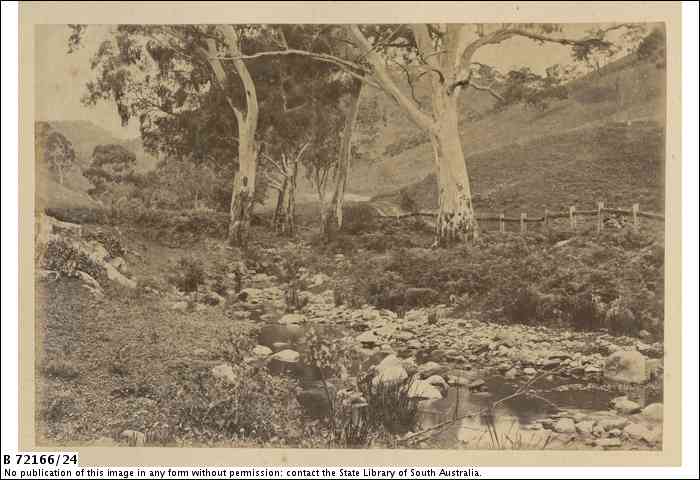|
January 11, 2012
In Other Histories: photography and Australia Helen Ennis says that the standard art histories do not consider any photographs from the colonial period, despite the importance of photography within visual culture during the second half of the nineteenth century.
When photography is introduced it is usually in relation to modernism (Max Dupain’s iconic image, Sunbaker is illustrated); feminism (with an illustration by Ponch Hawkes) and postmodernism that involved constructed imagery (represented by Anne Zahalka, Fiona Hall and Bill Henson). What is lacking is an account of the significance of photography in colonial Australia or bringing any new scholarship on colonial photography to light, even though there is a dearth of deep, object-based research into photography from the nineteenth and early twentieth centuries.
So I've been digging around a bit in what has been uncovered and made public about photography in colonial South Australia:
 Townsend Duryea, Fifth Creek, Morialta, ca.1870-1875, sepia print, NLA
Townsend Duryea, Fifth Creek, Morialta, ca.1870-1875, sepia print, NLA
The inescapable historical reality is the imperialist and colonialist underpinnings of 19th century settler Australia and so the interaction between Indigenous and settler Australians is therefore central to any understanding of specific local conditions and circumstances.
What becomes obvious is the diverse uses of photography in colonial Australia – from the topographical (especially panoramic representations) to trade views, landscapes and the ethnographic.
|
